Many think of grief as something to work through and move past. Or perhaps we can reach a point where we don’t dwell on our losses as much. The textile art of Beverly Ayling-Smith turns that idea on its head.
Beverly creates art that encourages viewers to purposely explore grief, loss and memory. Her work helps them understand that letting go doesn’t mean forgetting.
She incorporates many techniques across her portfolio, including painting, staining and sanding. But Beverly’s signature technique is the use of torn fabrics and stitch. Raw edges are her thing, and she generously shares how those torn bits contribute to a larger understanding of mourning and loss.
Beverly also describes how a degree in microbiology and her scientific research continues to influence her creative process. Her portfolio is clearly rooted in art and science, and it’s stunning.
Take a breath, get comfortable, and learn how hope can be found in loss, absence and grief.
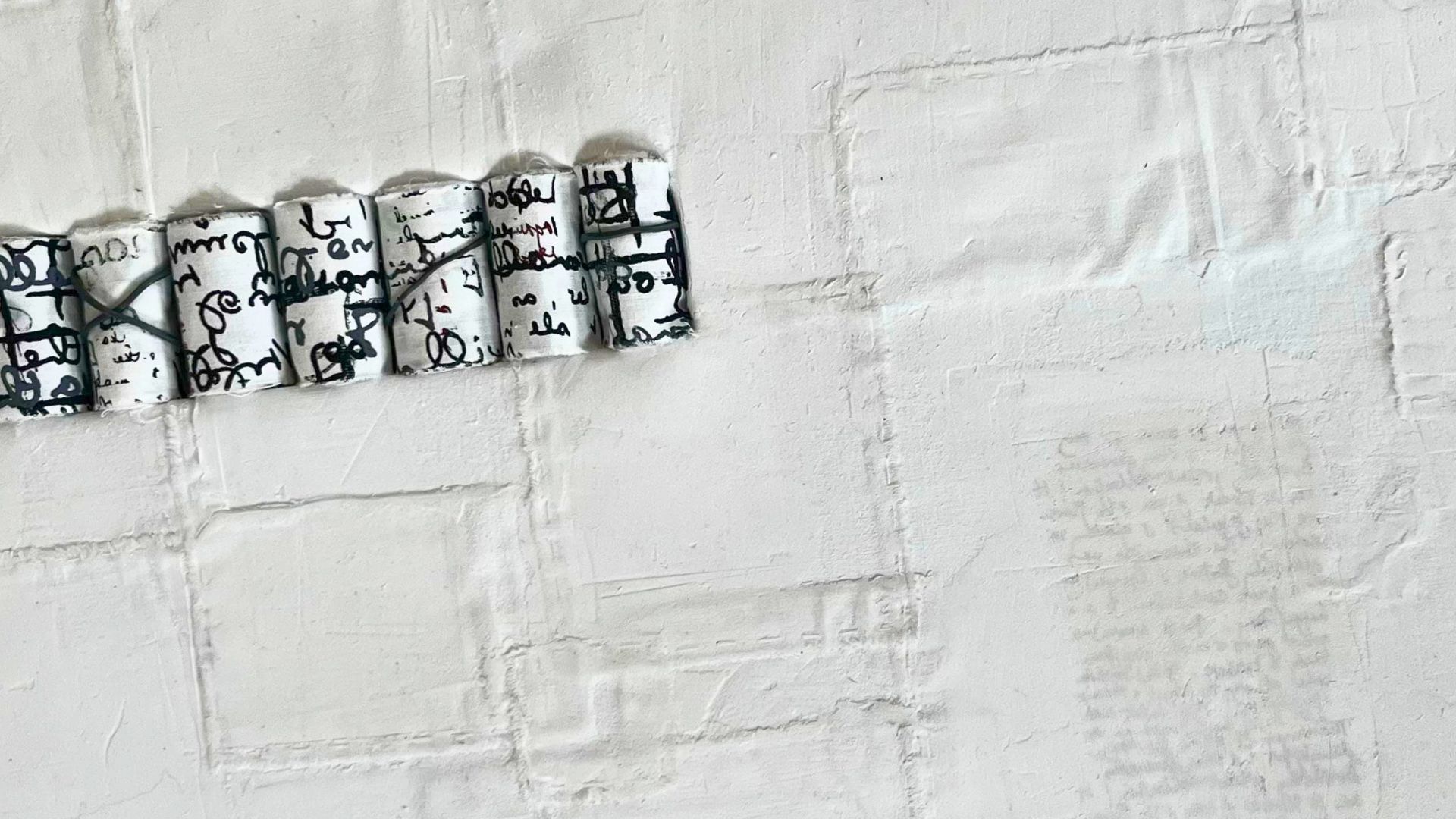
Loss, absence & grief
Beverly Ayling-Smith: My textile art focuses on the emotional dimensions of loss, absence and grief. We all experience loss in our lives, and it’s very easy to try to get on and get over it without taking time to acknowledge those feelings.
I use a muted palette and make work that has a poetic narrative. My art is not embellished or figurative, but instead uses stitch, print and colour as metaphors for loss.
“Everyone processes grief differently, and I try to use textiles in ways that connect viewers with any unresolved grief in their lives.”
Beverly Ayling-Smith, Textile artist
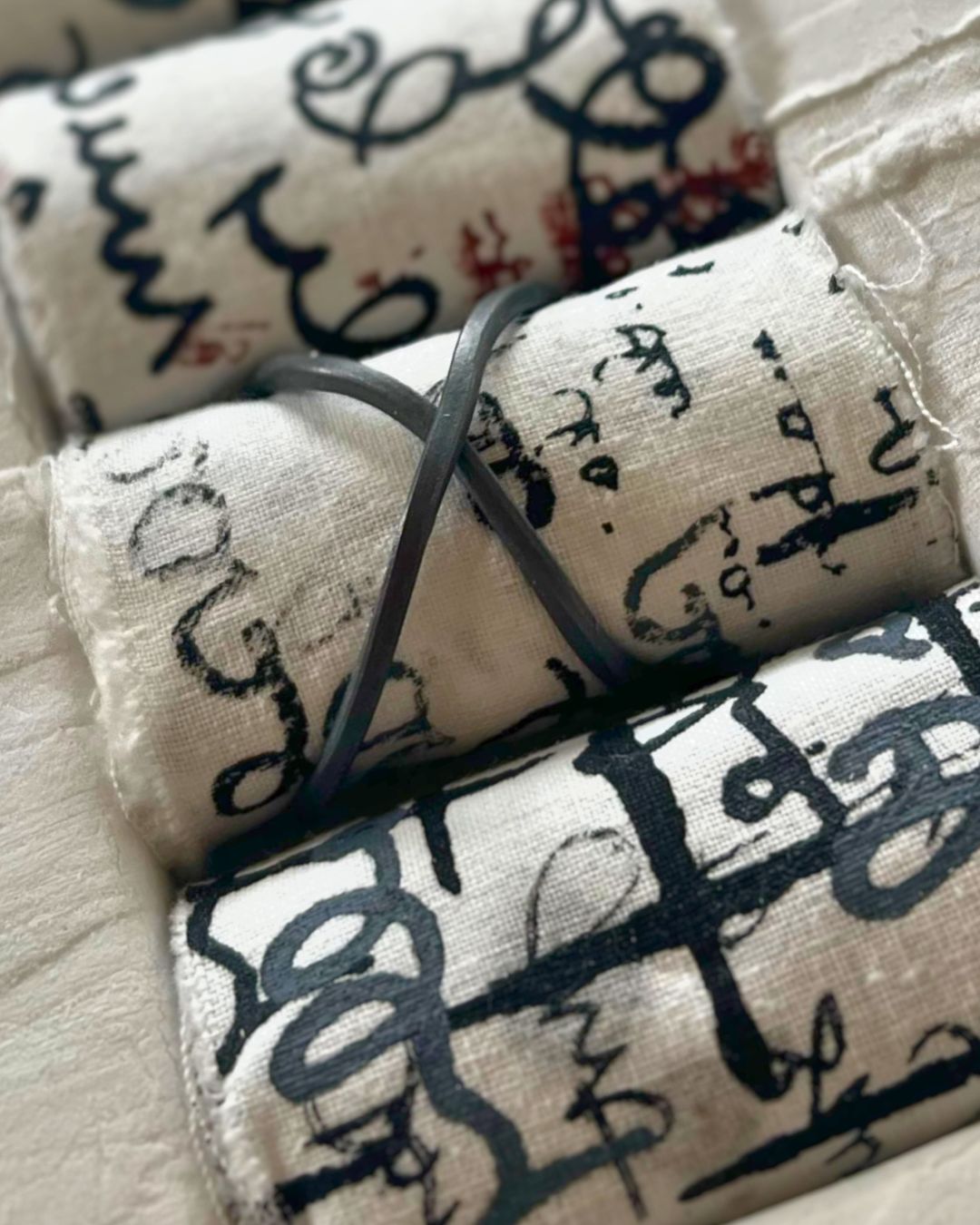

A foundation in science
My grandmother taught me how to knit and crochet. I didn’t do much with textiles at school, although I do remember tablet weaving when I was 10 or 11. I loved it, but we only did it one afternoon a week. We’d put our work on a table at the back of the classroom between classes, and everyone’s weaving got completely tangled up. A good exercise in untangling threads!
I later wanted to design and stitch a ruby wedding anniversary card for my in-laws, but I didn’t know how to start. So I jumped into a City and Guilds Part 1 six weekends a year for two years at Missenden Abbey. I completed Part 2 at Windsor with Jan Beaney and Jean Littlejohn.
I got hooked on the courses and tuition, so I completed the Windsor Diploma class and a distance learning Bachelor of Arts honours course at Opus School of Textile Arts.
“My scientific background has a real influence on my thinking and the way I use my sketchbooks.”
Beverly Ayling-Smith, Textile artist
Prior to my arts education, my first degree was in microbiology. I worked in antibiotic research and then in a lab dealing with hospital acquired infection. When I wanted to spend more time with my young children, I knew the job wasn’t suited for part time, so I took a break. That’s when I found I had a desire to make using textiles.
My sketchbooks usually contain lists of samples to try, evidence of the results, and what to try next time if not satisfied. They are more like reflective journals than traditional books of sketches.
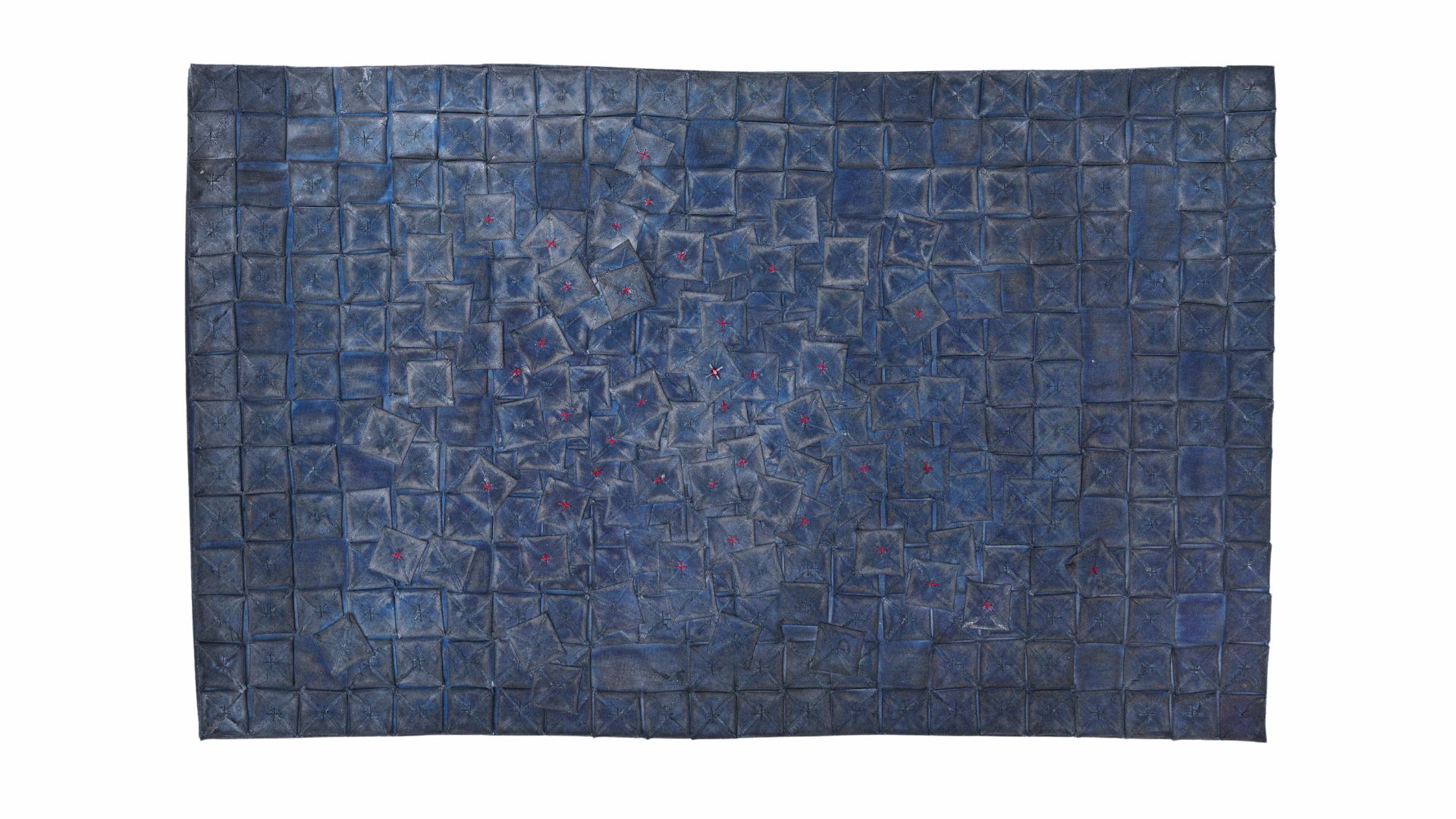
Research informs art
Some concepts discovered during my PhD research have keenly influenced my practice and thinking about making.
The work of psychologist Professor Dennis Klass and his theory of continuing bonds particularly informs my work. He described how, in some cases, attachments to the deceased are maintained rather than relinquished, and letting go doesn’t mean forgetting. That was an important discovery for me.
“It made me realise there was a benefit in keeping in mind the memory of those who have died.”
Beverly Ayling-Smith, Textile artist
The exhibition catalogue from Textures of Memory: The Poetics of Cloth by Julia Curtis also influenced my thinking.
Julia wrote that the manipulation of fabric in textile art has its own vocabulary: fold, drape, stretch, stain and tear. She explained how those words signify an emotional range from intimacy, comfort and protection to more disquieting states of restriction, fragility, loss and impermanence.
The catalogue also features an essay by Pennina Barnett. It was challenging, but its poetic nature means it can be read many times with something new resonating each time.
A favourite quote of mine is: ‘The poetics of cloth are composed of folds, fragments and surfaces of infinite complexity. The fragment bears witness to a broken whole, yet it’s also a site of uncertainty from which to start over.’
Pennina also suggests that ‘to fold’ is to ‘withdraw into the recesses of a world’. But it’s not a lament or loss, for the fold is without beginning or end.
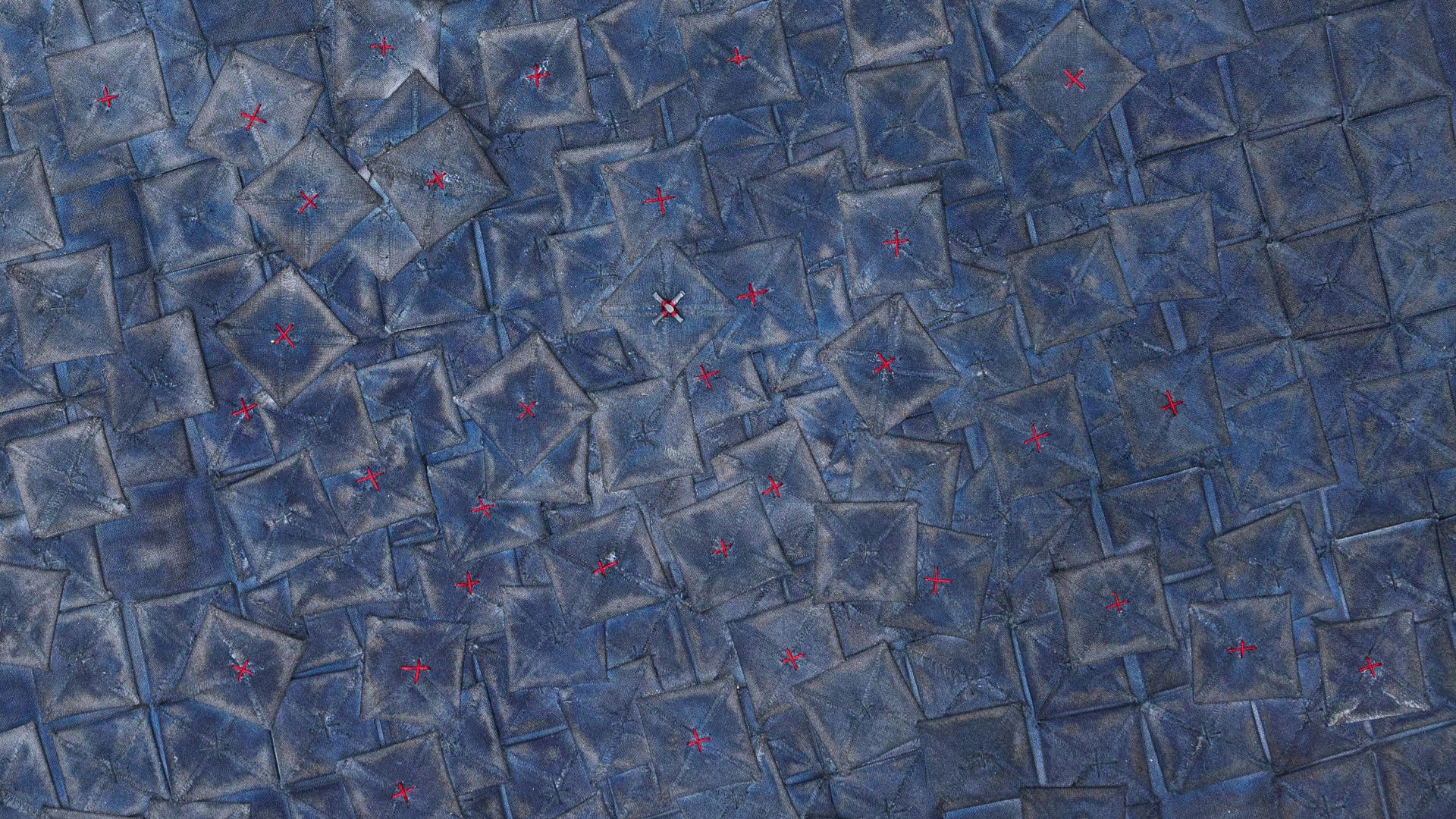
The lives of linens
Bedsheets and pillowcases are currently the most suitable type of cloth to use in my work.
A bedsheet holds many memories for viewers. It may trigger memories of other artworks that use sheets or other uses of a sheet. But it also likely reminds viewers of their own personal experiences with bedsheets, including the repeated and endless tasks of washing and ironing.
“There’s an intimacy in a sheet’s touch. It covers the naked body. It witnesses pleasure, pain, illness and death.”
Beverly Ayling-Smith, Textile artist
As viewers look at my work, their memories related to bedsheets and pillows can be tapped to complete my art. As described by the writer Umberto Eco, a work of art may have an undefined meaning that must be completed by viewers acting as interpreters according to their own knowledge and personal experiences.
My use of a bedsheet therefore creates a connection with the audience and allows for exchanges to address their shared experiences in the world. The artwork acts as a catalyst for the viewer to remember.
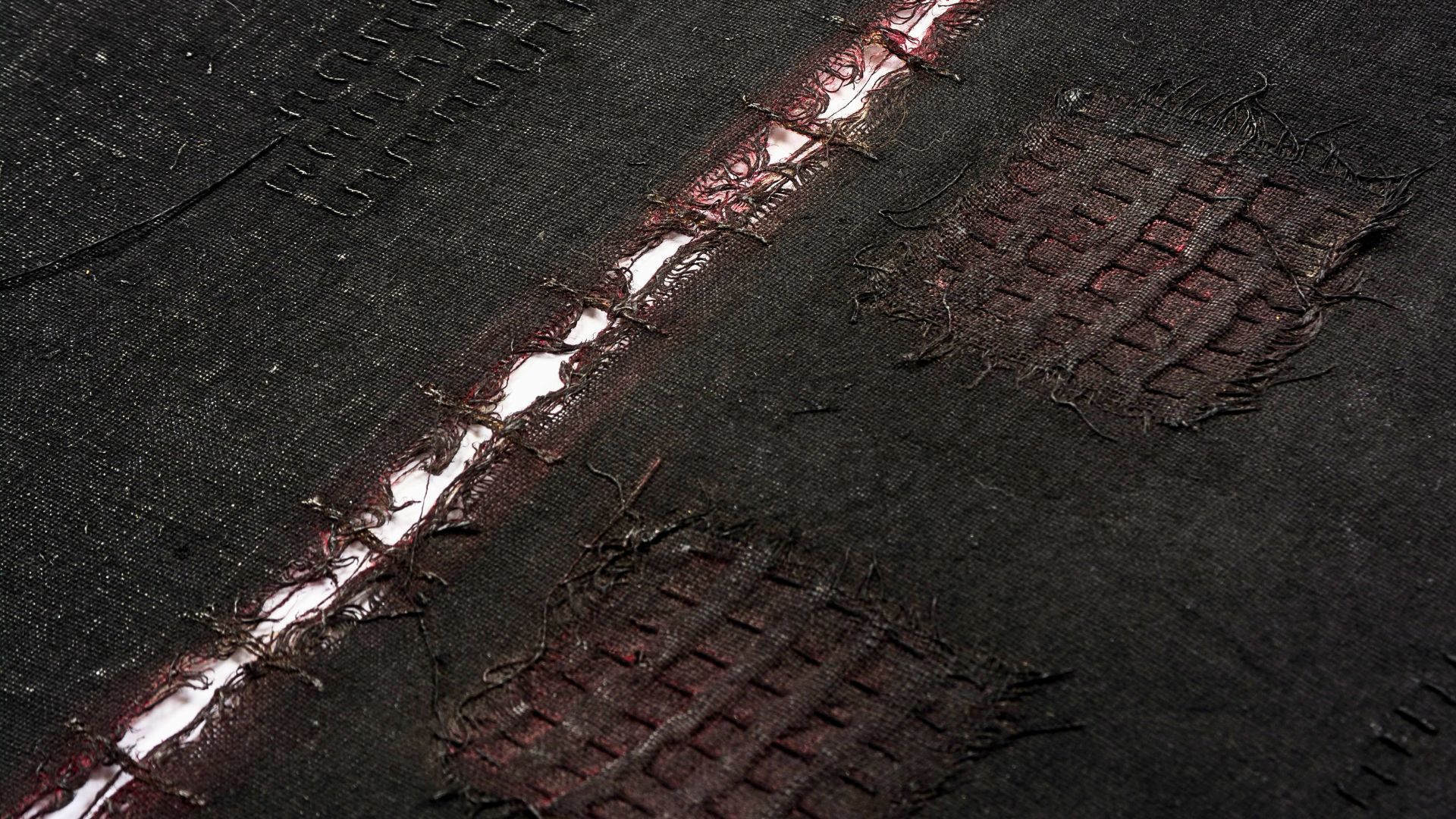
Wall of Memory
In 2012, I made a textile wall that was 5 metres wide by 3 metres high for the Cloth and Memory exhibition in Salts Mill, Saltaire. When viewers stood close to the wall to examine the surface detail, its overwhelming size filled their fields of vision.
For Wall of Memory, I sought to revisit the idea of making a wall but using a whole bedsheet. I wanted the surface to look like bricks in a wall, so I attached pieces of paper to the back of the sheet and painted it with bitumen paint from the back. The gaps between the papers looked like the edges of stones in a wall.
I then tore the fabric and inserted copies of letters I had received from people who were no longer with me. Seven had died in a short period of time. Stitching the letters in place was a way to hold and honour their memories.

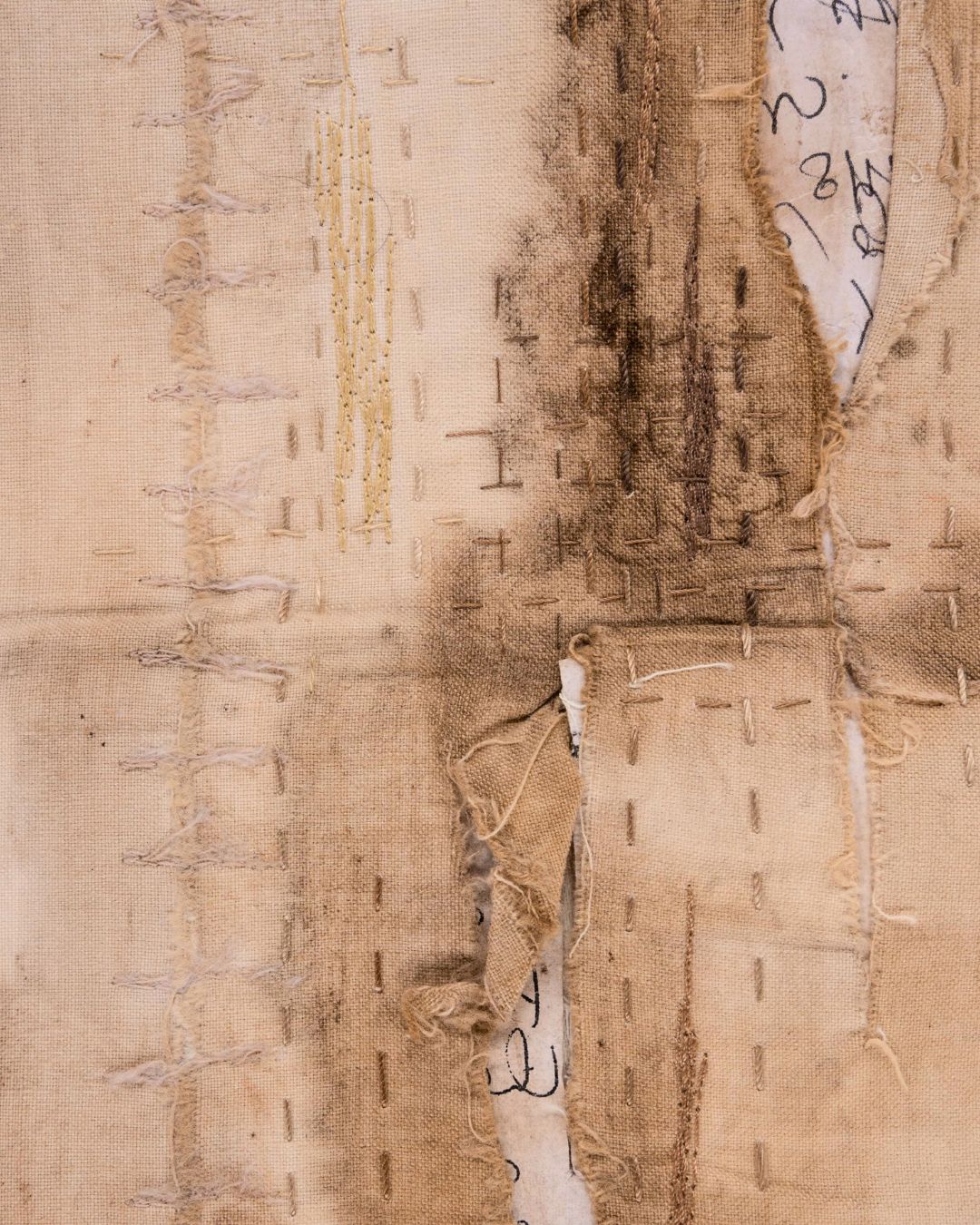
Layers of Memory
Layers of Memory is a body of work that questions what we remember, and how we revisit, refine, and reconstruct events and feelings of the past.
Why is it that some memories come readily to mind whilst others must be pieced together from fragments? Do we feel what we felt then, or what we felt the last time we remembered?
This collection built upon my previous research into emotional barriers and vulnerability. I used pillowcases and inherited bedsheets to explore and question whether we preserve the past or reconstruct it in light of the present.
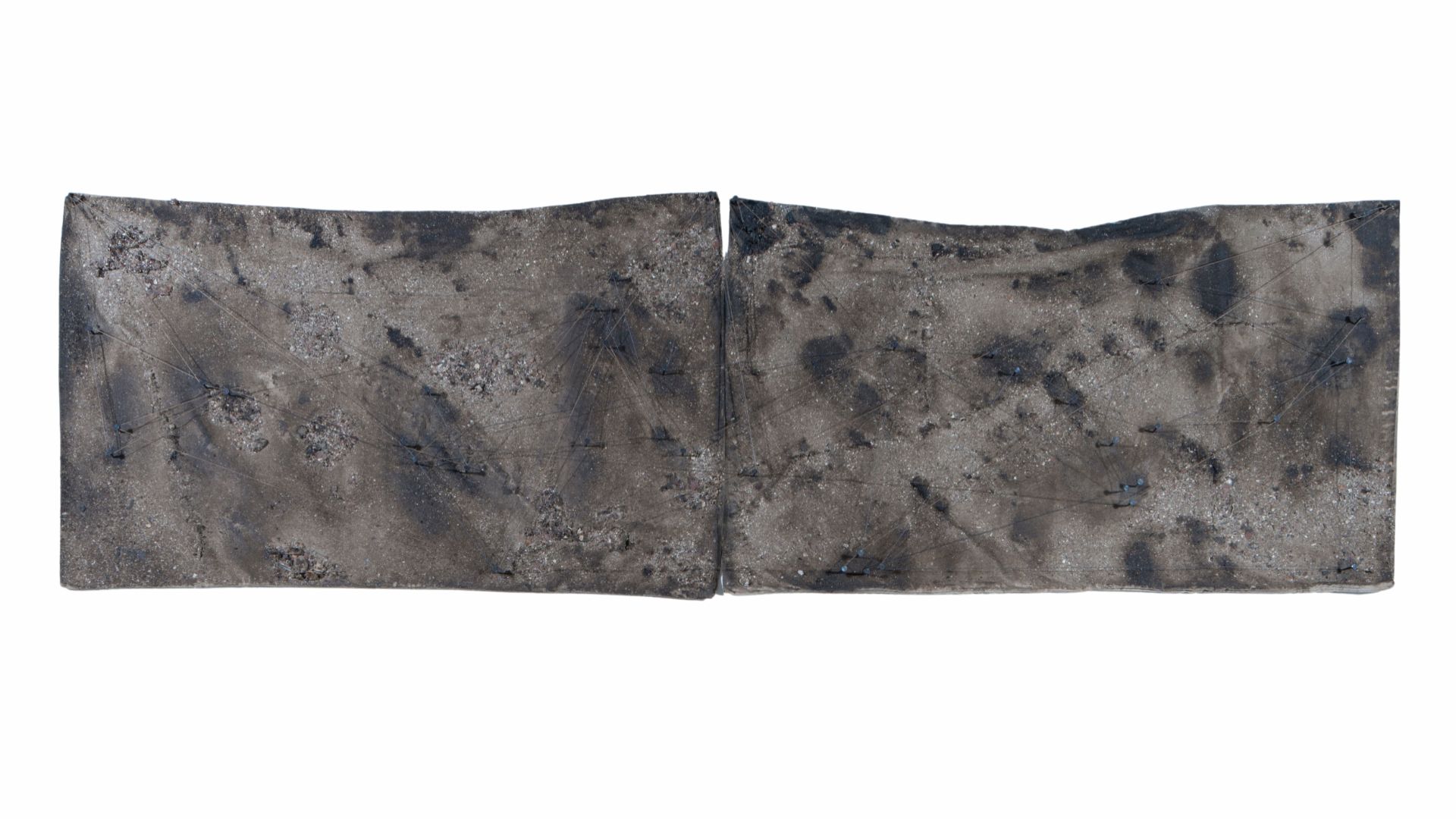
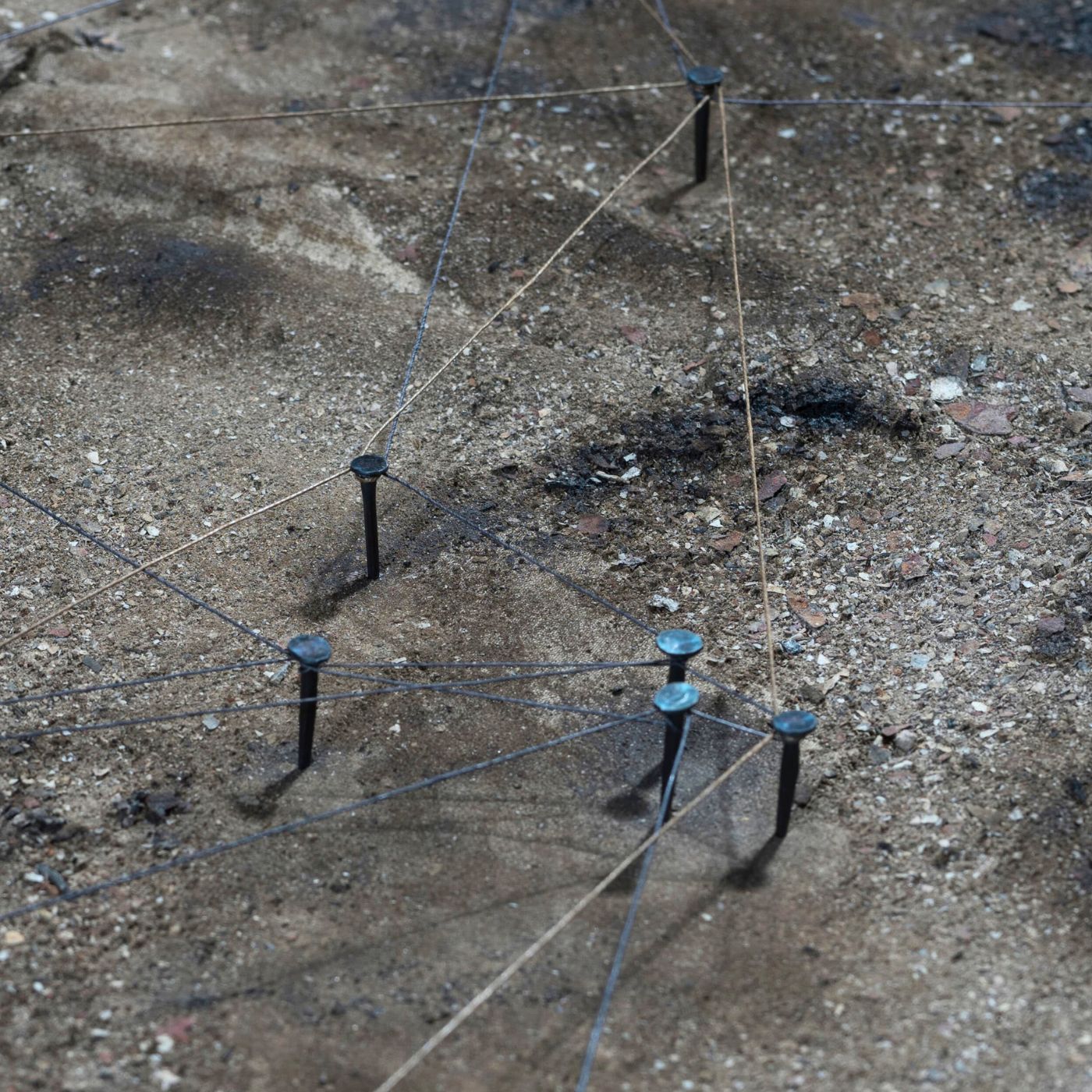
Creative process
New work always starts with reading, making notes, picking out phrases, and figuring out what I want a piece to say. Sometimes an idea for a piece comes fully formed. I’ll know the colour, size, techniques to be used and even the title. Others start with a phrase or just a word.
Once I have an idea for a work, I may do some sketches in my sketchbook using marks that look like stitching or patches of fabric. That makes the drawing easier to interpret in fabric.
Then I start sampling, sometimes first with paper, but always with fabric. Many of the pieces I make are quite large, so I need to know my idea will work before I embark on a piece of fabric that large.
“The bedsheets I work with hold a special provenance, as they are vintage unused field hospital sheets from the Second World War.”
Beverly Ayling-Smith, Textile artist
The bed sheets were found in a bunker in France after the war ended. Their significance to me is that my father-in-law was wounded a few days after D-Day and was hospitalised in France for some time.
I share my creative process, and my interest in memory and loss, in my workshop for Stitch Club members. Members will create a personal artwork that celebrates the memory of a person or express their reflection on a life lived. They’ll learn some of my techniques, including painting, transfer techniques and stitch.
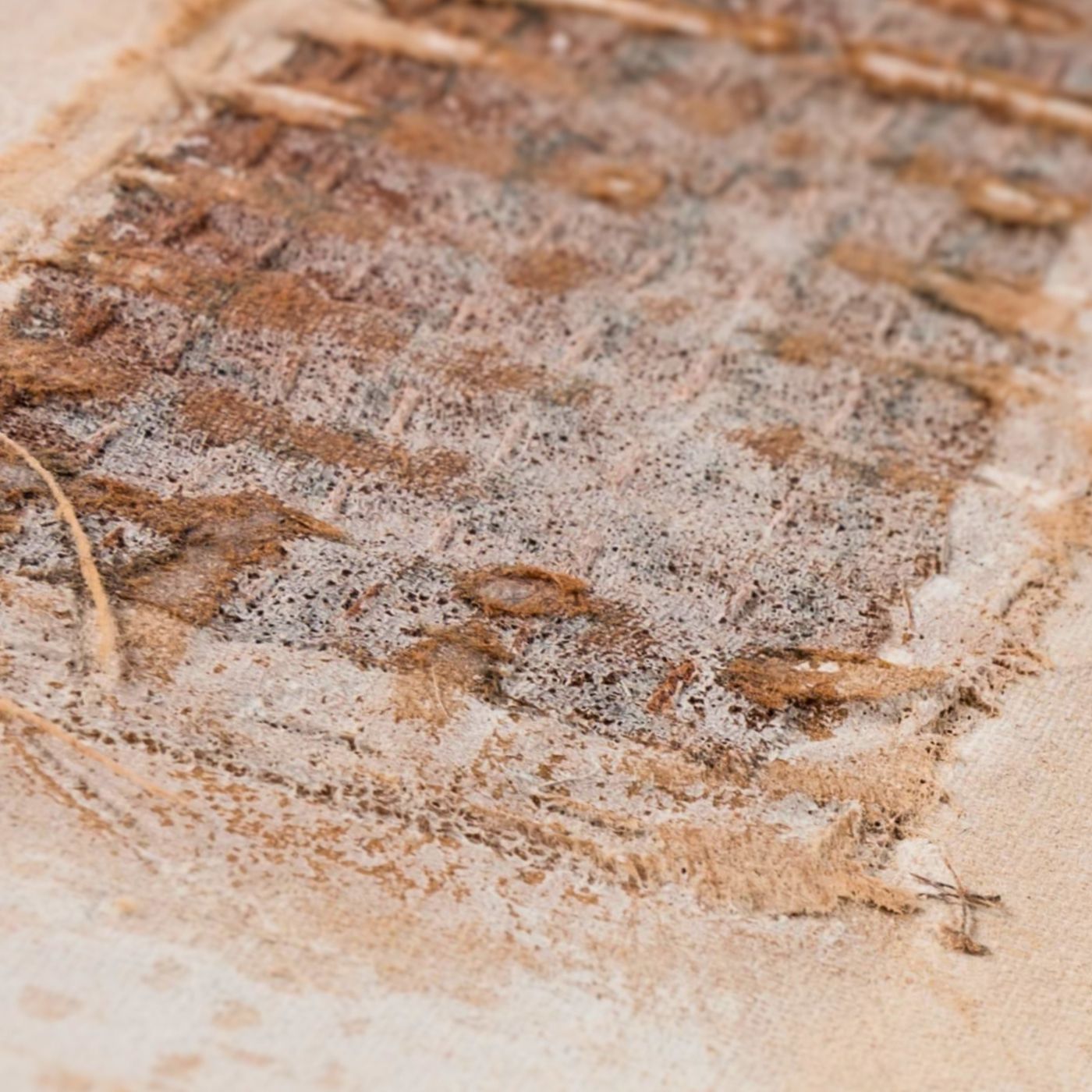
Ripping & tearing
Much of my studio practice uses cloth torn into smaller pieces to create rag-like fragments. For me, the torn edge of a fragment of a larger piece represents the edge of forgetting and is physical evidence the fragment was once part of a larger whole.
The whole cloth contains the memory we try to retain, but it continues to fray and fragment as over time we continue to forget. It’s the only remaining reminder of events and relationships that can trigger what has otherwise been forgotten.
“Torn cloth, eventually discarded as useless rags, is like a memory fragment.”
Beverly Ayling-Smith, Textile artist
The piece Shredded in the Torn Apart exhibition was created from hundreds of torn strips of bedsheet material that had been painted black. I went into my studio in the morning and just tore fabric. I made snips in the length of fabric and then just ripped away.
It was during the lockdown period in early 2020, so it was a good way to relieve frustration and anger. There’s also something about the sound of tearing fabric that contributed to the piece.
To reference the size of my body, the fabric strips are attached to a backing fabric that matches my height and shoulder width measurements (1.68m x 45cm / 5.5′ x 18″).
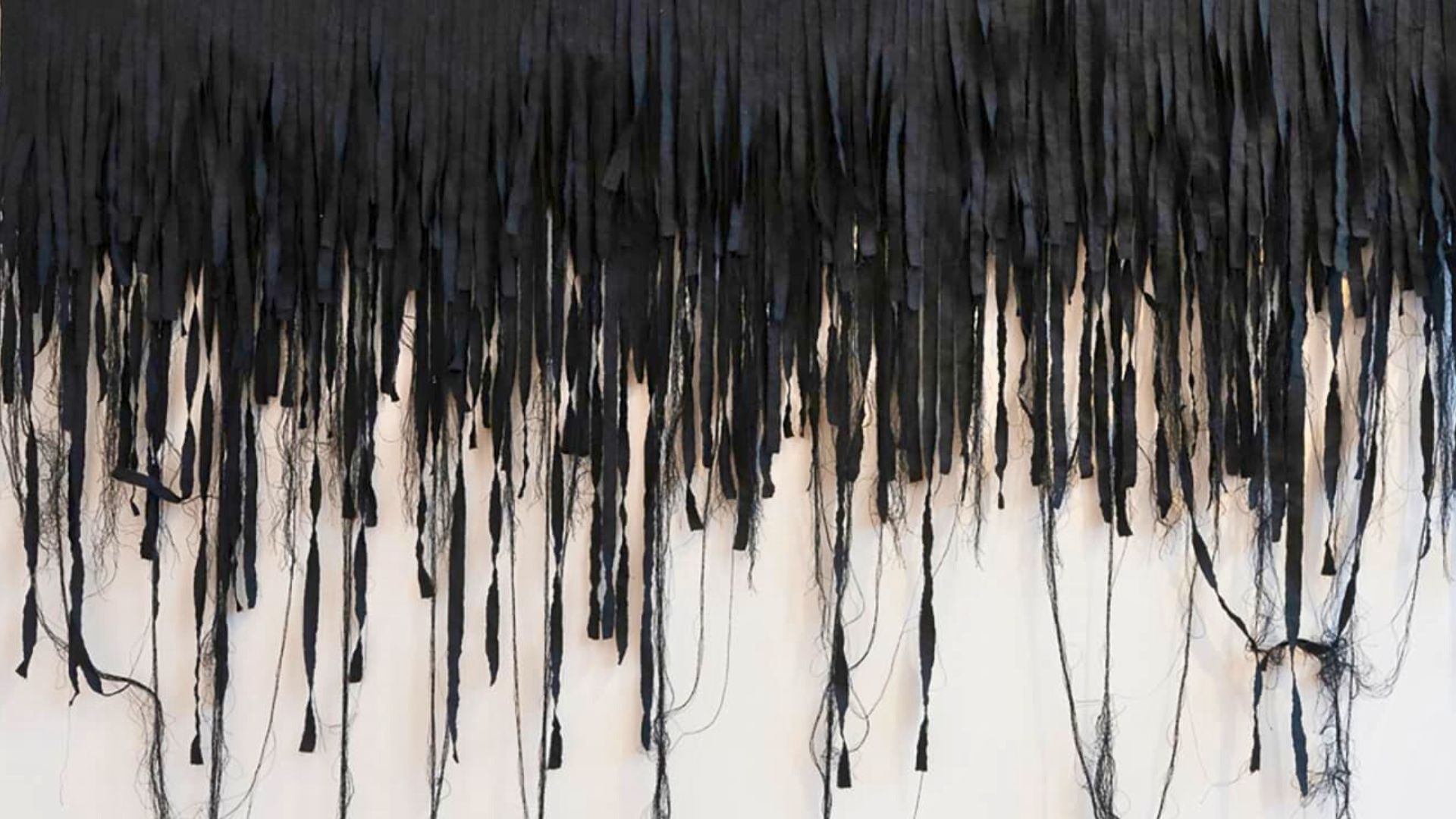
Adding layers
Once I’ve prepared fabric by tearing it to a particular size, I choose from a variety of layering techniques. I may add patches and lines of stitch, or I might add painting and printing. I use various types of paint, including household emulsion paint, bitumen, acrylic, silk paints and ink. I’ve recently been experimenting with earth pigments.
An element of destruction might take place, using waxing and painting and then sanding with an electric sander. Or I might add a layer of chalk or ash.
I use bitumen paint to stain fabric. I think of stains as accidental marks on fabrics rather than intentional painting or dyeing processes. Staining with bodily fluids has a connotation of the shame of defilement that comes with it as described in Mary Douglas’ book Purity and Danger.
“A stain is a record of the time when the staining substance was expelled from the body, whether involuntarily or as the result of violence.”
Beverly Ayling-Smith, Textile artist
Stains represent substances that are on the border, both inside and outside the body. A liminal substance that disturbs and unsettles. Many artists have used staining in their work, including Ed Ruscha, Chiyoko Tanaka and Shelly Goldsmith.
Not all these techniques go into one piece. But having a range of techniques available is important.
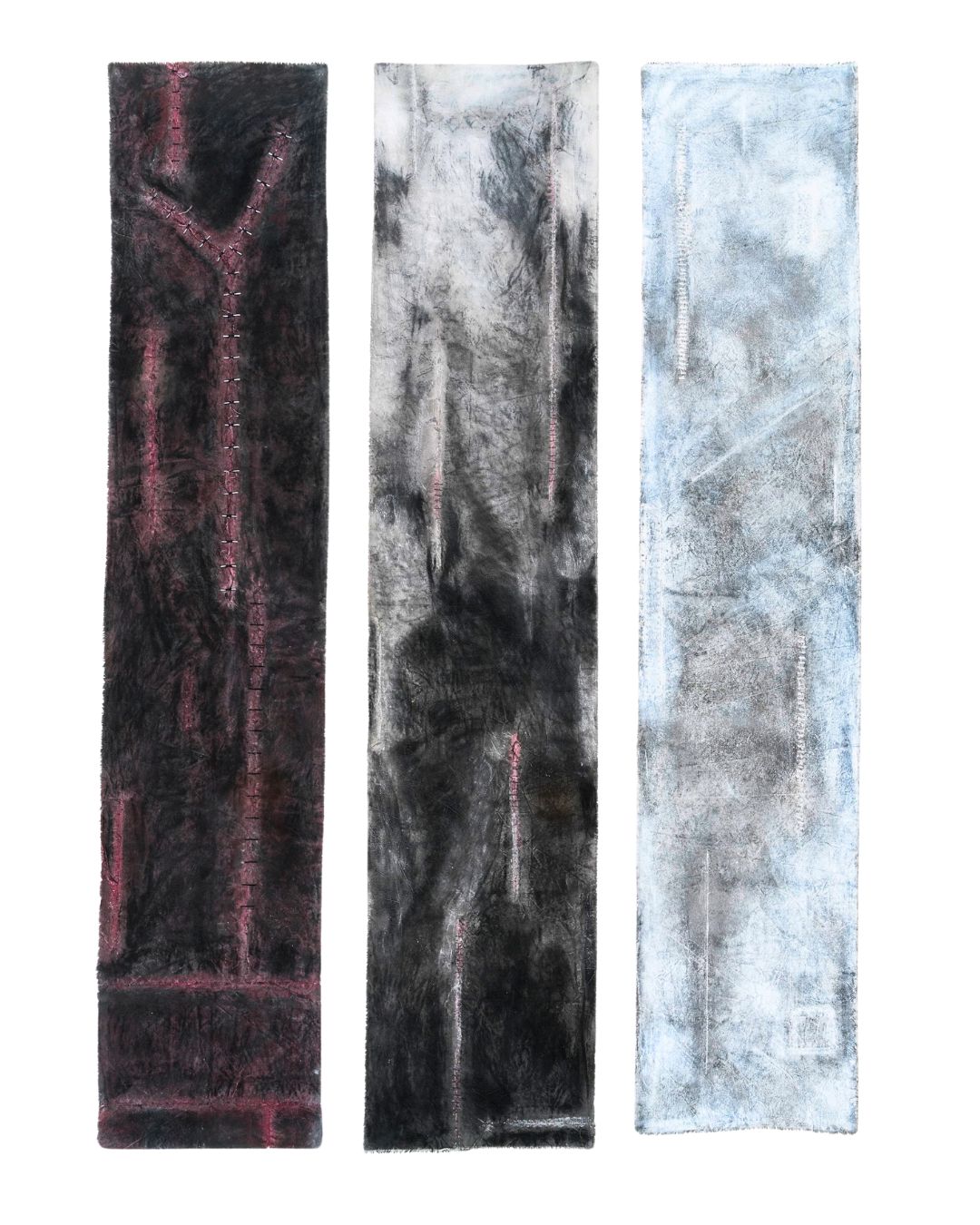
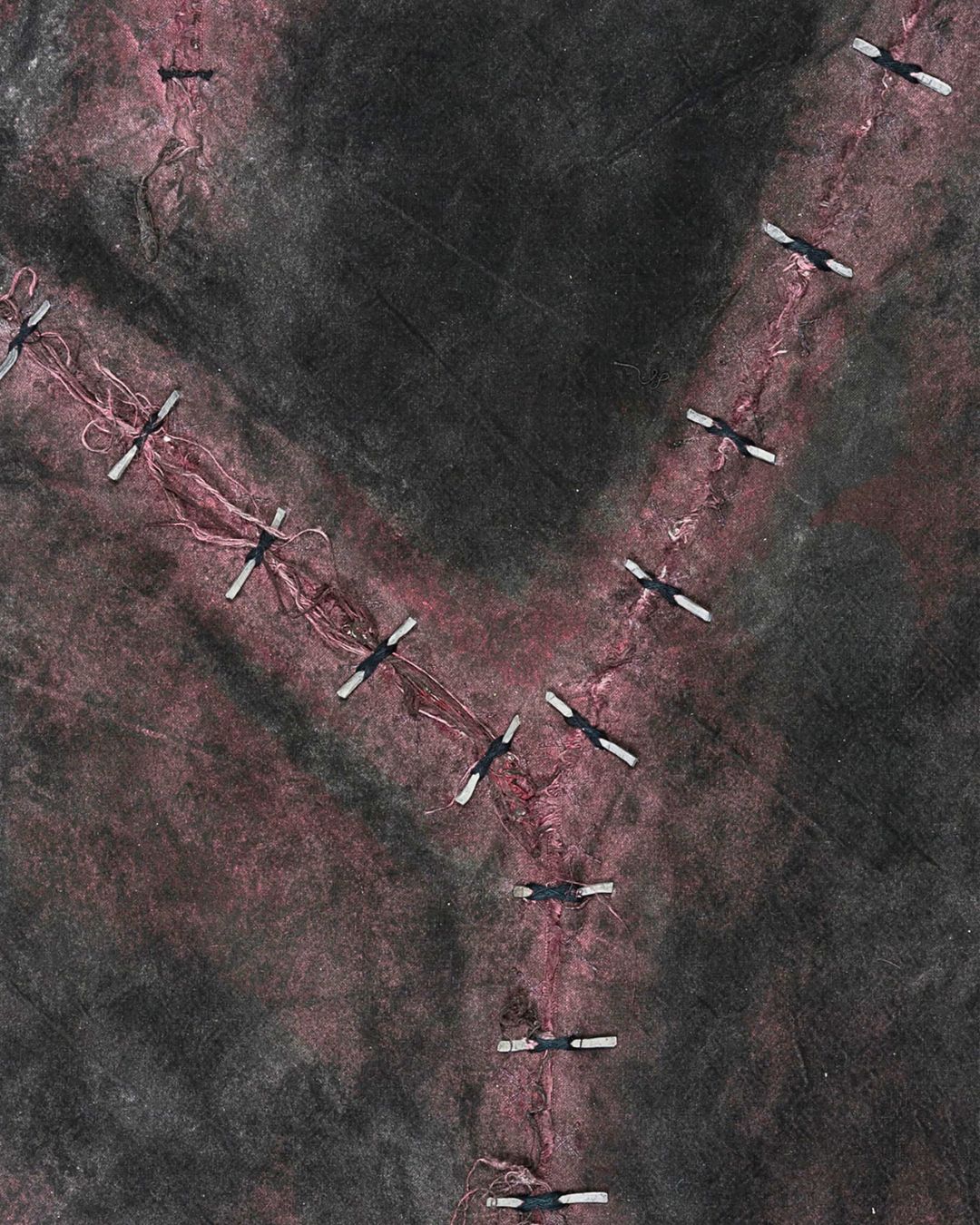
Meditative hand stitch
Most of my work includes hand stitching that’s often quite repetitive. For me, it’s a meditative process done in quiet concentration.
My stitch choices are usually simple, and they’re functional stitches used to mend areas or bring attention to a particular area. For me, there must be a reason for using a particular stitch. I often use a running stitch to hold down patches. If I want a bold line, I like using whipped chain stitch.
In terms of thread choices, I use linen or silk thread if I’m going to paint the work after stitching. I also use one thread of six-stranded cotton, particularly if I’ve already coloured the background and want a similar coloured thread.
I store my threads by colour. At the beginning of a piece of work, I select some of the threads in different weights I think I will need. I put them in a tray or box lid, to keep them together with needles and scissors. Having everything in one place helps prevent me from being distracted while working.
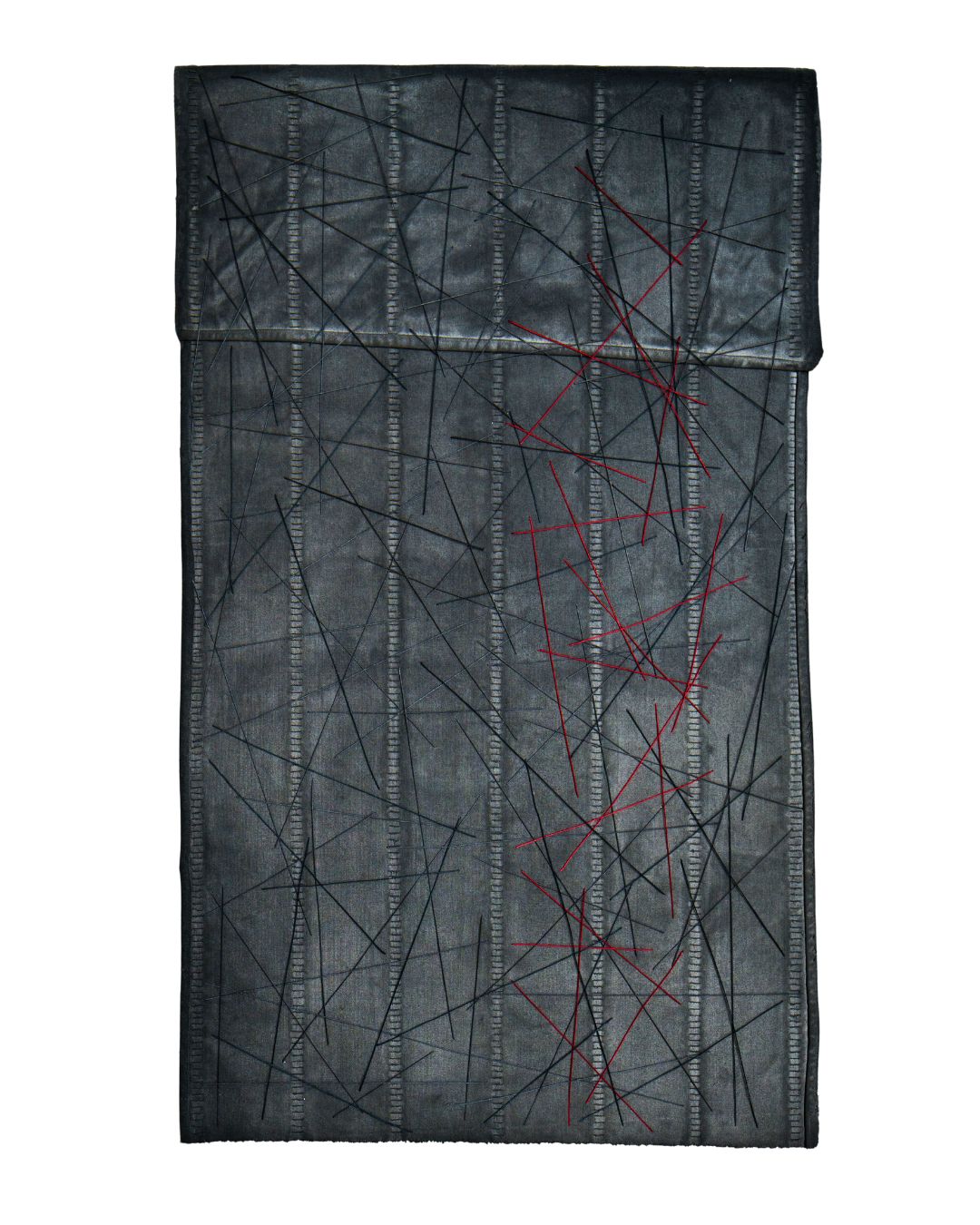
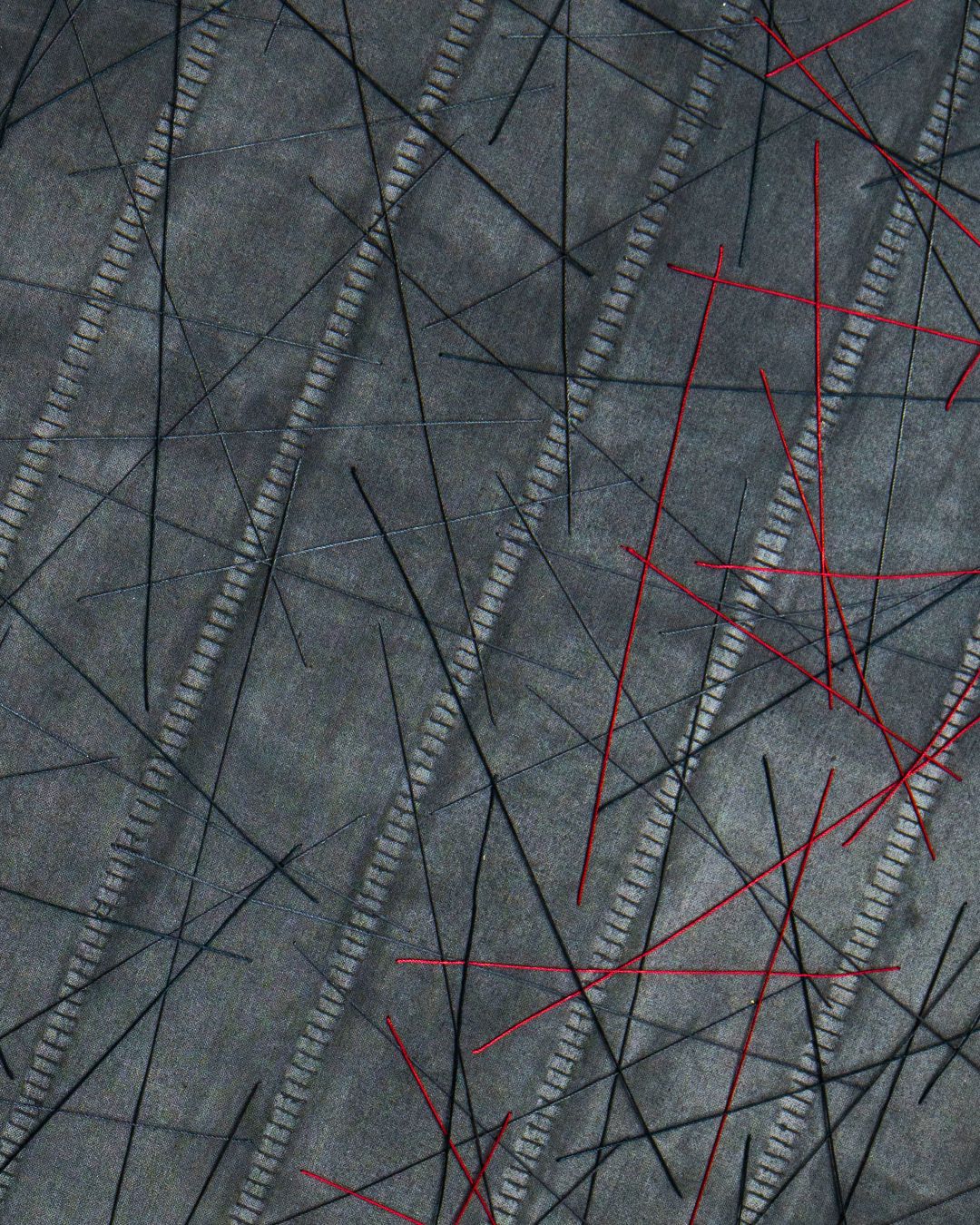
Greatest creative challenge
In 2011, I received an invitation to be a part of the Cloth and Memory 2011 exhibition at Salt’s Mill in Saltaire, Yorkshire. I was given a solo exhibition space with nearly 20 metres of wall to fill.
Although I had been invited, I still had to visit the mill and then write a proposal for the selection panel. It took until February the following year to get everything in place, and the exhibition opened in July 2012.
A serious amount of work had to be made including remembering, repeating and working through, which filled an entire wall. In total, I created 11 new artworks, as well as a videotaped interview and catalogue essay. I also had to host a workshop.
At the same time, my PhD schedule required annual reviews and conference presentations! I had to get organised, so I created multiple lists and a day-by-day chart tracking my progress and due dates. I’ve used that planning method since, and it works well for me.
Garden studio
I’m very lucky to have a studio in the garden. The home we purchased had a ‘granny annexe’ that was never occupied and had no heating. So, I turned it into my own studio.
It has a desk with my computer on it, as well as a worktable made from a very thick plywood covered with a wipeable cloth. The legs of the table are drawer units that house my materials and equipment.
I built storage cupboards under the stairs that lead to a guest bedroom, so there’s plenty of space for all my stuff. As it’s away from the house, it’s really quiet and I can work undisturbed.
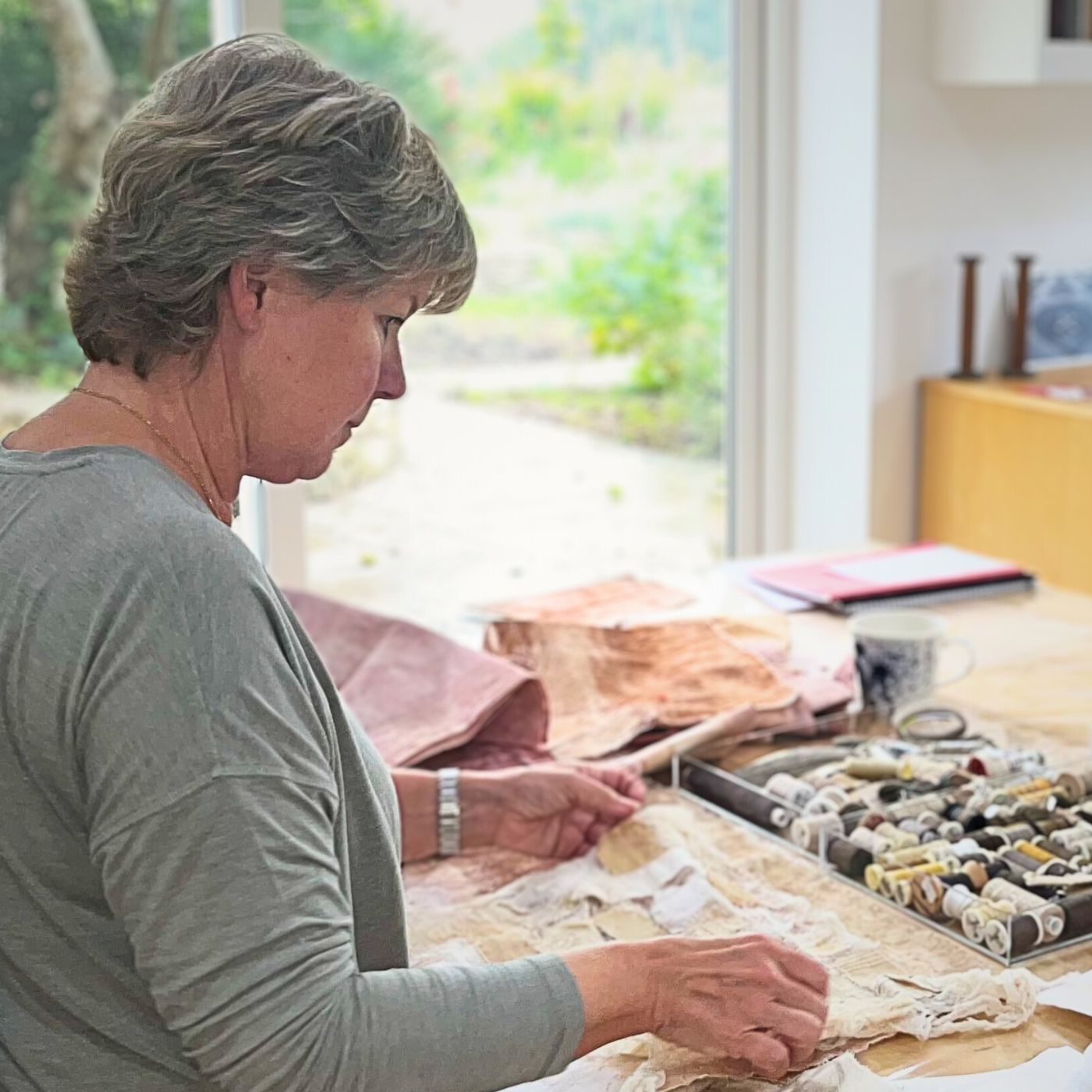
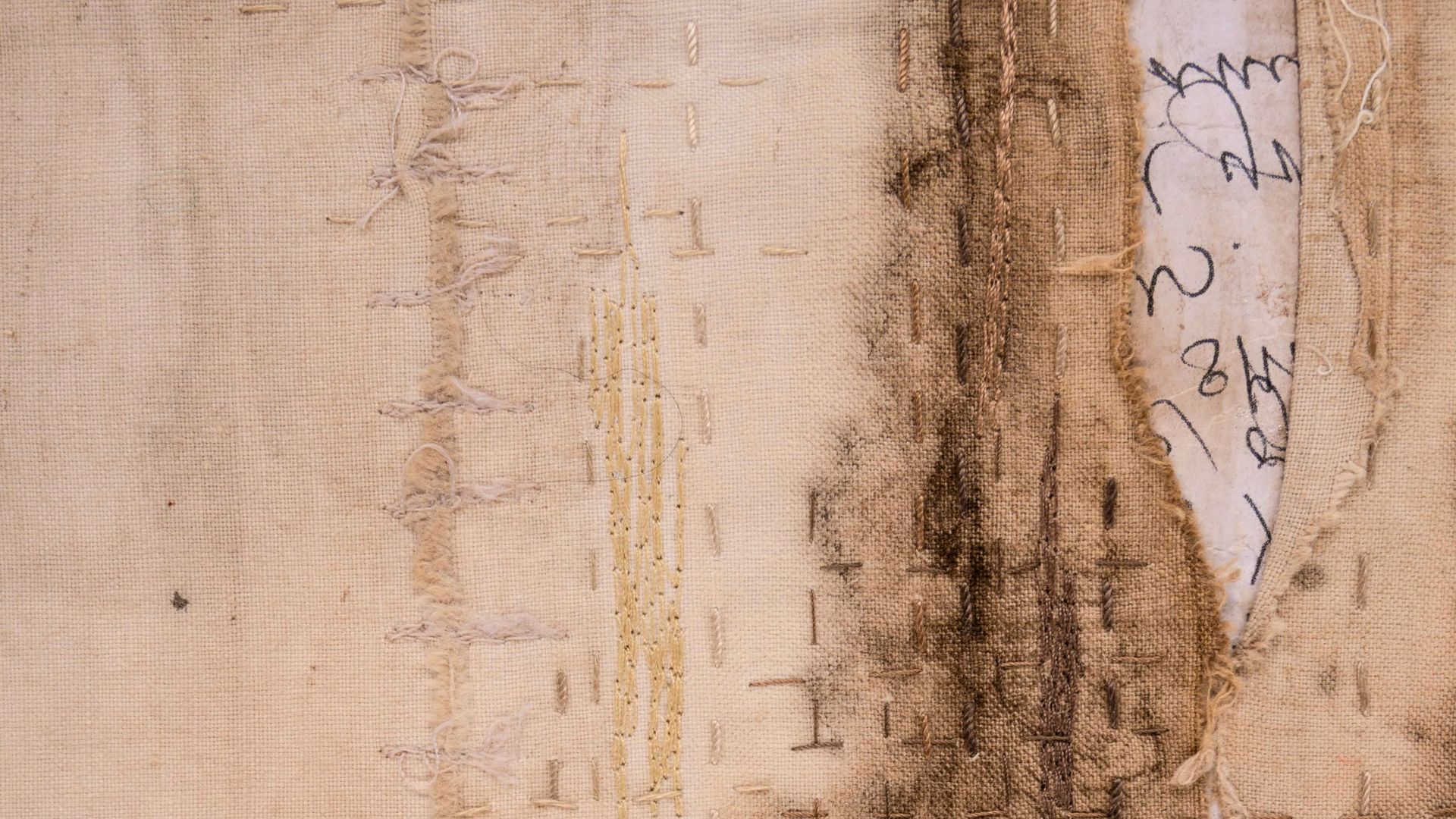

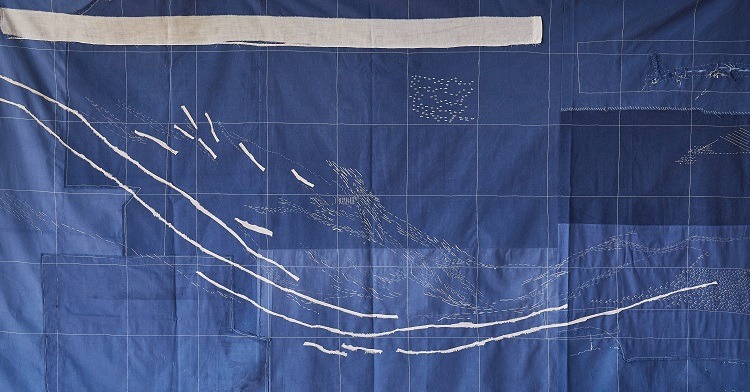
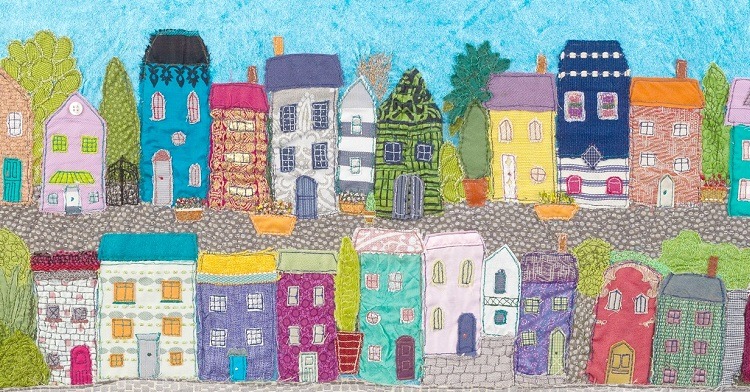
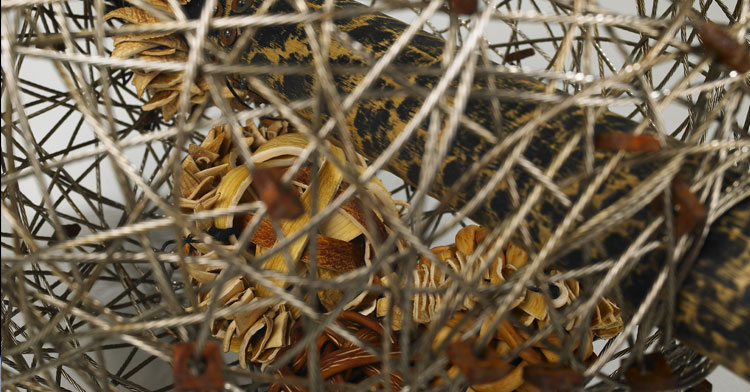
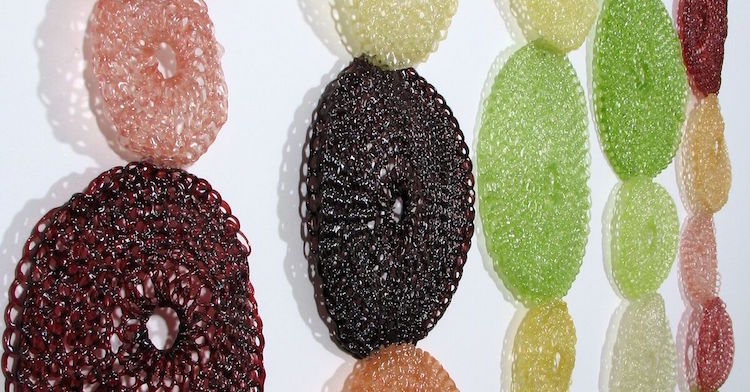
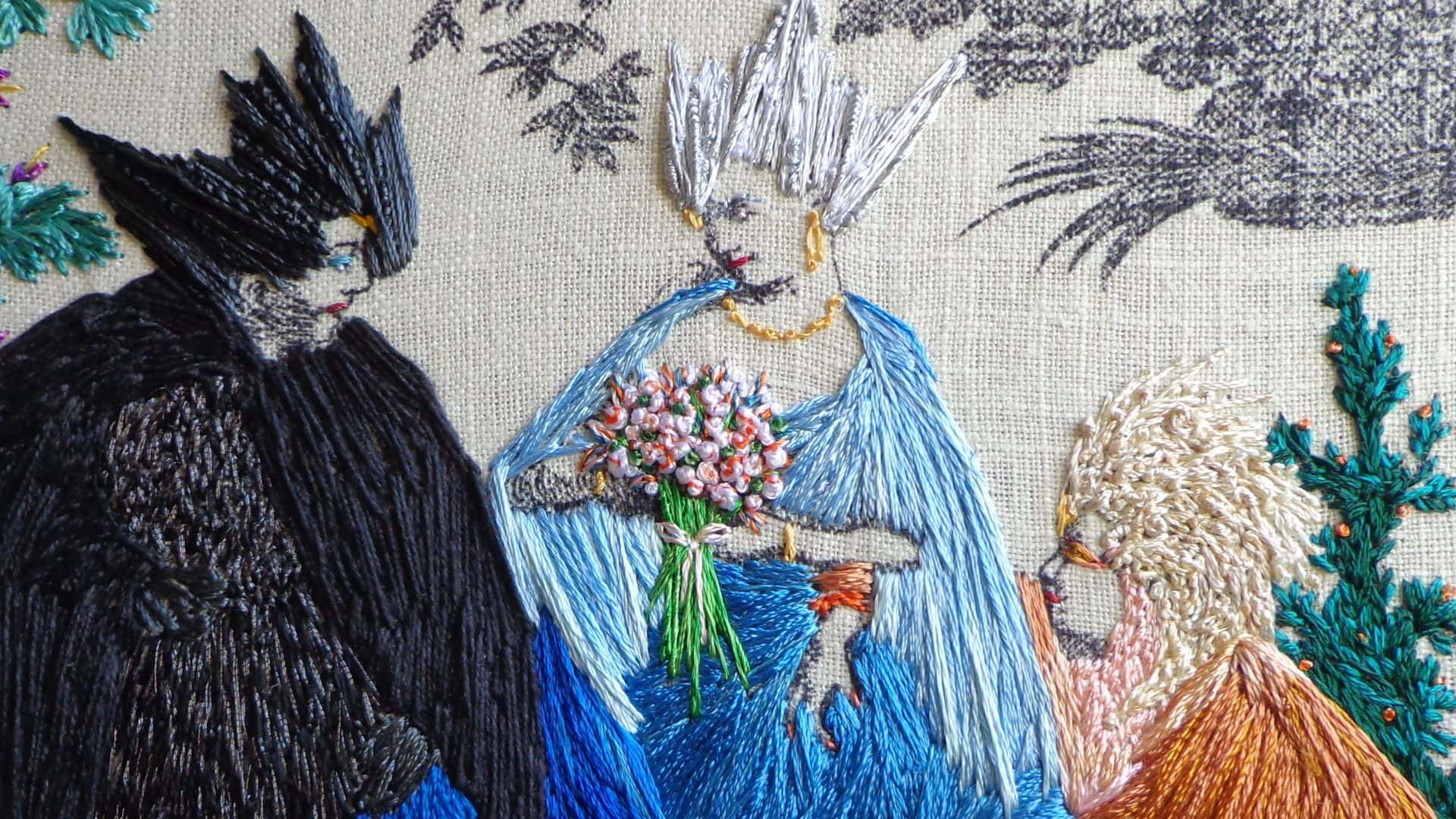
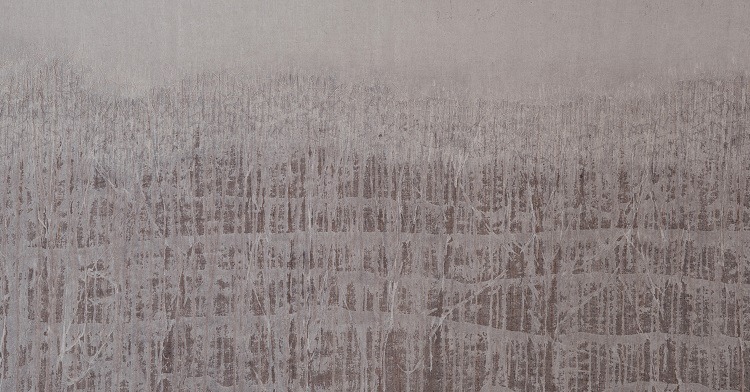
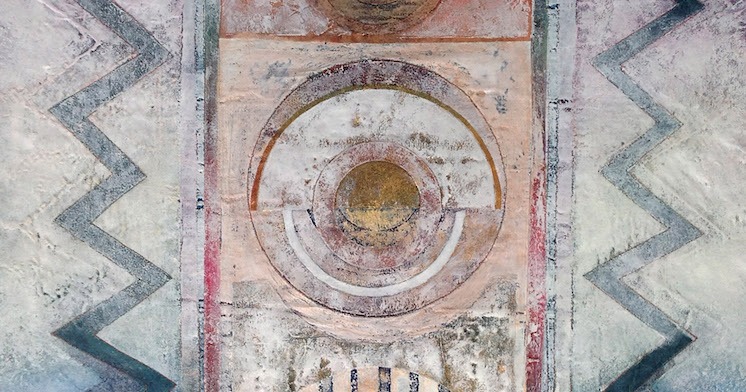
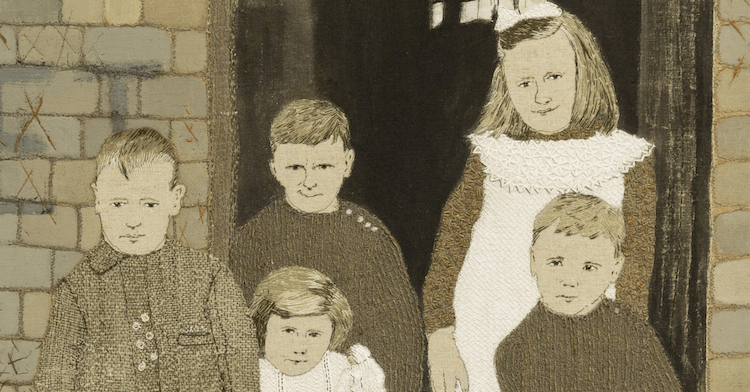
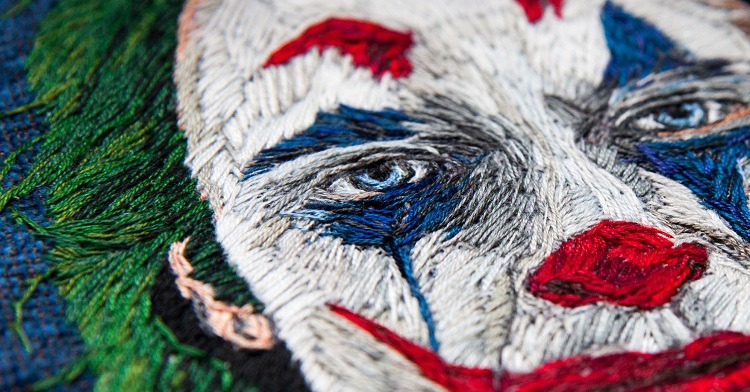
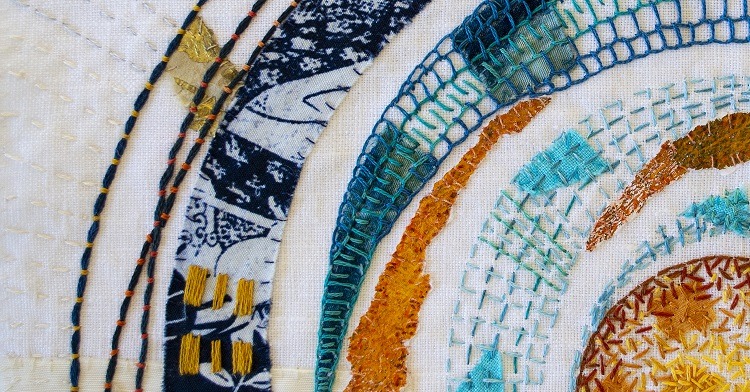
3 comments
Beverly
Thank you Reena
Janet Coffman
Congrats to Textile Artist for profiling a bit about this artist. I was a member of Stitch Club for several years, and may join again at some point. I certainly would if more artists such as Beverly Ayling-Smith offered workshops.
Reena Brooks
I am currently working on a series related to the loss of my mother. Your work and view about loss is very inspiring and giving me some new ideas to pursue. Thank you!